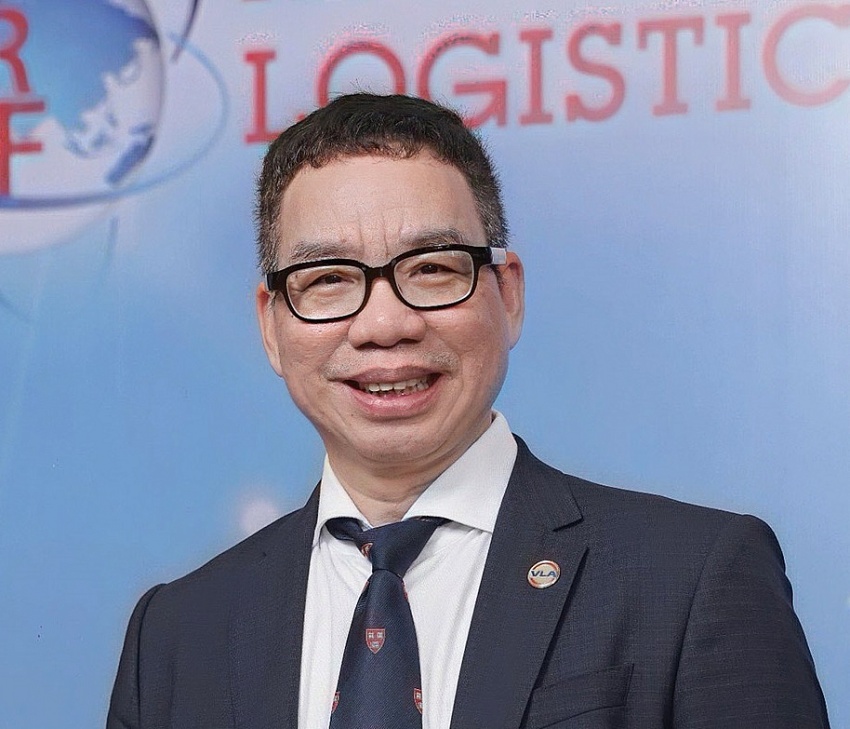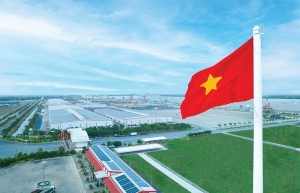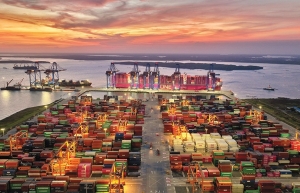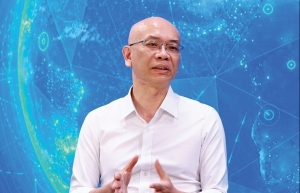Coordination can ease logistics issues
What is the potential of Vietnam’s logistics industry currently?
Over the past few years, Vietnam’s logistics industry has experienced rapid growth with an impressive annual growth rate of 14-16 per cent, reflecting an increasing domestic demand and the country’s strong integration into the global economy.
 |
| Dao Trong Khoa, chairman of the Vietnam Logistics Business Association |
Vietnam has joined many free trade agreements, and has created a favourable ecosystem for local logistics enterprises to expand their operations and improve their position in the global supply chain.
The logistics service industry’s contribution to national GDP could reach 12-15 per cent by 2050. To achieve this, Vietnamese logistics enterprises need to constantly invest in technology, expand their connection networks, and develop high-quality personnel to raise their competitiveness in the international market.
Based on these goals, what are the challenges for Vietnamese companies amidst the challenging global economic environment?
Vietnamese logistics businesses are inevitably facing many challenges. Besides objective factors such as high fuel prices and disruptions in international supply chains, Vietnamese logistics companies also face internal hurdles such as high logistics costs and a lack of a modern and synchronous logistics infrastructure.
It is time for companies to optimise their operation processes, accelerate the application of digital technology, and improve management capacity to raise competitiveness.
Furthermore, most Vietnamese logistics companies are small or medium in size, so they often encounter financial difficulties and quality human resource shortages. Logistics companies are urged to remove these barriers, change their business models, and catch up with development trends such as green logistics and other changes in the industry.
What are your recommendations to remove bottlenecks in logistics infrastructure connectivity?
Vietnam’s logistics industry is facing some major obstacles, such as unsynchronised traffic and road systems, as well as a lack of connectivity between seaports and industrial parks.
To solve this, it requires close coordination between businesses and the government. The government should formulate a more strategic investment policy in infrastructure, especially the transport network connecting regions, industrial areas, and international gateways.
It is vital to develop integrated logistics centres to facilitate businesses transporting goods from industrial areas to seaports and airports more efficiently.
How do you evaluate the competitiveness of Vietnamese logistics companies in the current ecosystem?
Vietnamese logistics companies have made great strides, especially over the past decade. From the humble beginning of agents, they have actively integrated into the international networks, applied modern technology, and participated in global value chains.
The Vietnam Logistics Business Association and its member companies have taken a proactive approach to greening the logistics industry. Efforts have been made to develop tools to measure and calculate carbon footprints.
The Haiphong Logistics Association has created new carbon credits to support their members achieve carbon neutrality across the supply chain. We will join forces to host the International Federation of Freight Forwarders Associations World Congress in Hanoi in October 2025.
However, compared with international companies, domestic enterprises need to scale up their operation as well as improve service quality and ability to apply technology. It is important that we focus on investing in digital technology for automation to optimise the operation processes.
At the same time, it is also vital to improve the skills and management level of workers so that Vietnamese logistics businesses can compete in the global environment.
Collaboration remains one of the weaknesses identified in logistics development. What should be done to improve collaboration among companies?
Strengthening ties between local logistics companies not only raises their competitiveness but also fosters the growth of seamless, synchronised supply chains. The cooperation between large enterprises such as Saigon Newport Corporation and Cai Mep International Terminal in Cai Mep-Thi Vai aims to optimise the port infrastructure.
To promote the effectiveness of these models, it is necessary to build logistics alliances across the value chain. Among them, large enterprises will play a leading role and support smaller businesses in terms of technology, management systems, and services.
The government should also encourage public-private partnership models in the logistics sector to enhance infrastructure investment and international connectivity.
Investing in new tech, improving operational processes, and strengthening links in the logistics ecosystem are decisive factors for businesses to create a breakthrough. In addition, the government needs to play an important role in creating a favourable business environment by accelerating the digitalisation process in logistics management, reforming administrative procedures, and improving the quality of infrastructure.
This will lay the solid foundation for domestic logistics businesses to develop stronger.
 | Logistics supply chain efficiency on the rise The expanding consumer market, with abundant supply and a favourable geographical location for penetration and network expansion, is pushing Vietnam’s logistics supply chain to increase efficiency. |
 | Connectivity a factor in positive results of logistics companies Port operators and shipping lines continue to record a robust performance in 2024, reflecting the vibrant potential of Vietnam’s logistics market. Dang Huy Hoang, research analyst at VNDirect Securities, shared with VIR’s Vy Bui the current performance data of Vietnamese logistics companies. |
 | Long-term funds to address logistics cost Vietnam’s logistics industry is rapidly developing, but high costs remain a barrier to unlocking the full potential of the country’s digital economy and e-commerce market. |
 | Logistics infrastructure can enjoy a bright future Vietnam’s logistics industry needs to address bottlenecks such as congestion, delays, and high costs to create a breakthrough. Tran Thanh Hai, deputy director of the Agency of Foreign Trade under the Ministry of Industry and Trade, spoke with VIR’s Hai Yen about the keys to reducing logistics costs. |
What the stars mean:
★ Poor ★ ★ Promising ★★★ Good ★★★★ Very good ★★★★★ Exceptional
Related Contents
Latest News
More News
- Main drivers for Vietnam’s digital economy future (December 03, 2025 | 11:35)
- Pivotal stage of growth paves way for rise in M&As (December 03, 2025 | 10:00)
- Positive projections for M&A interest from Thailand (December 03, 2025 | 09:40)
- Manifesting the first line of defence in cybersecurity (December 03, 2025 | 09:00)
- The transformational role AI can play in accounting arena (December 03, 2025 | 08:00)
- Unlocking 5G-AI potential in Singapore (December 03, 2025 | 08:00)
- Data-driven strategies vital for a fast-evolving nation (December 02, 2025 | 09:41)
- Policy to practice: how Vietnam can lead the region (November 26, 2025 | 16:03)
- Mobilising private capital at scale vital for climate battle (November 26, 2025 | 15:36)
- VILAF and Yoon & Yang launch Vietnam - Korea Practice Unit (November 26, 2025 | 15:16)

 Tag:
Tag:




















 Mobile Version
Mobile Version